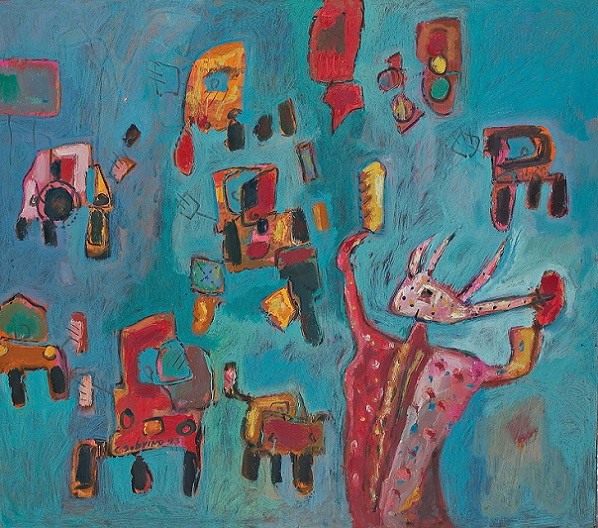
“BORICUAS: Contemporary Works from the ICP Collection*” opened at the Museum of Design and Art of Miramar [Museo de Diseño y Arte de Miramar (MADMi)] on March 8, 2025. According to curator Marilú Purcell, the selection of works presented in BORICUAS covers approximately 60 years of Puerto Rican visual arts production. The works represent a diversity of generations of artists and movements, ranging from exponents of the Generation of the 1950s to the present. MADMi is located at 607 Cuevillas Street, San Juan, Puerto Rico. [*ICP=Instituto de Cultura Puertorriqueña]
Description (by curator, Marilú Purcell): The exhibit titled BORICUAS includes works from the Institute of Puerto Rican Culture’s collection of contemporary art representative of the evolution of the history of art in Puerto Rico. The selection of works presented in BORICUAS covers some sixty years of artistic production, representing generations of artists and a wide range of movements, from members of the Fifties Generation like Carlos Raquel Rivera to today, when concerns may seem less insular, yet the need to express our Puerto Rican identity still permeates.
Visual artists act as chroniclers of their time, tellers of stories that capture the sense of their reality and the customs that surround them. In the case of Puerto Rico, those desires, those urges, to create an art that portrays us began with the great Francisco Oller, who set the parameters of an art of distinctly Puerto Rican subject-matter with his paintings of tropical landscapes and still-lifes that clearly portrayed our island, and with the objective of showing that those paintings, those portrayals, were as worthy as any painting by his European colleagues.
That tradition of portraying a Puerto Rican and Caribbean identity has continued to evolve over the decades and in many manifestations in the arts. Our island may be small, but the ways of feeling “boricua” — fully Puerto Rican — are many, and they are not limited to an idealized image of the white jíbaro, or farmer, and life in the country or the mountains. We come in all shapes and colors, and our history is long and complicated. Therefore, our artists present these multiple ways of being boricua, or Puerto Rican, whether in the mountains, on the coast, or in cities, which may in turn be San Juan, Ponce, New York, or Chicago.
For more information, see https://www.madmi.org/boricuas-evento and https://www.madmi.org/exhibiciones/actuales/boricuas
